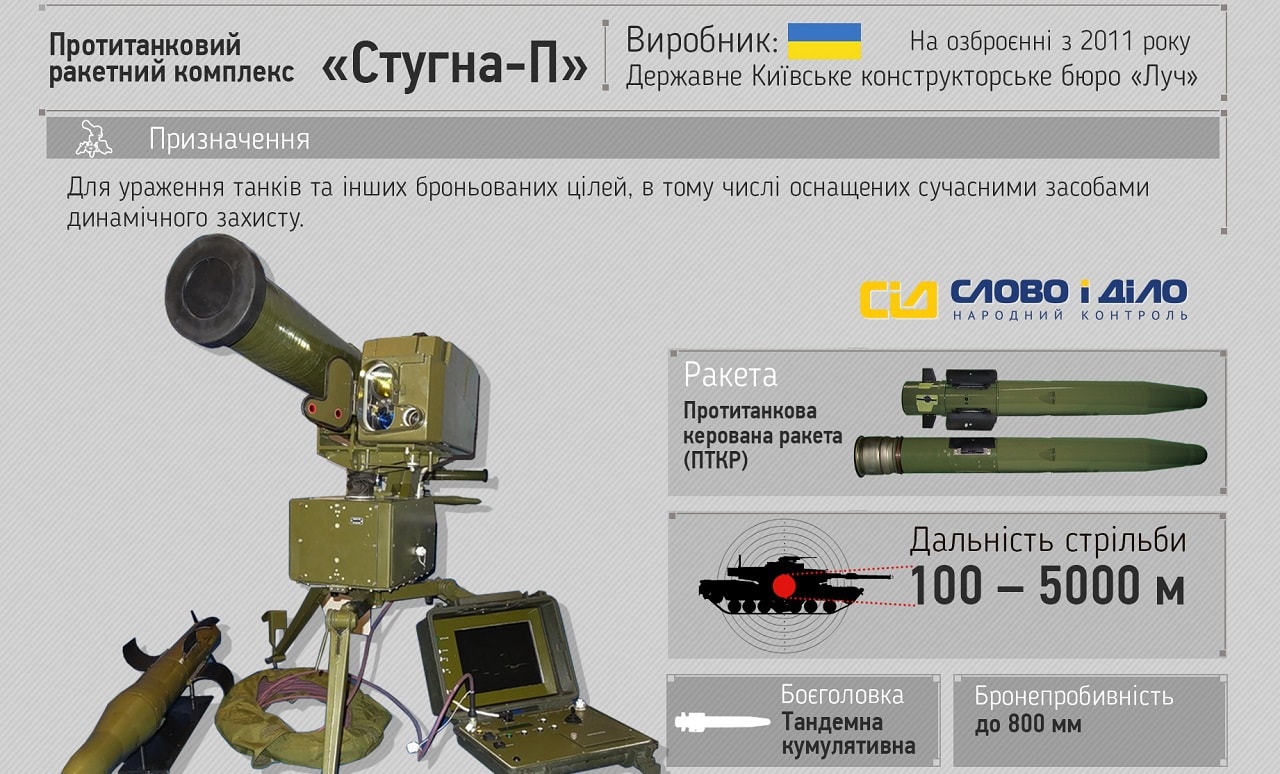Stugna-P – Ukrainian Indigenous Tank-Killing Missile Also Effective Against Helicopters: The Ukrainian home-grown Stugna-P anti-tank missile system has been effective against Russian armor. Now it is shooting down Russian helicopters. The Stugna-P destroyed one of Russia’s best attack helicopters – the Ka-52 Alligator on April 5. The Russians are already dealing with Stinger MANPADs (man-portable air-defense systems) that are threatening low flying helicopters.
Now the Russians are ordering the attack choppers to change tactics by flying out of range of the missiles, darting in to fire their own weapons, then leaving the area of operations quickly. Here is a rundown of the situation:
What Happened to the Russian Helicopter?
Recent footage shows the takedown of the Ka-52 helicopter by the Ukrainian 95th Air Assault Brigade in the Izium area. The Ukrainians are using the video display of the Stugna to sight in the hovering Ka-52 flying at low altitude. Then a Stugna-P missile easily takes it out.
Made With Ukrainian Ingenuity
The interesting aspect of the Stugna-P is that it is assembled by the Ukrainian defense firm Luch Design Bureau along with some foreign components.
The Stugna-P is versatile not only in its use (manual operation or fire and forget mode) but it can also destroy diverse types of targets. The most important of which are tanks and armored vehicles, but also the ability to wreck emplacements, bunkers, and buildings. Now it has proved its worth against helicopters.
Stugna-P: A Long-range Killer
The range is excellent. It can eliminate targets up to three miles away. And if operators need a close-range kill, it can fire at a tank at a distance of 328-feet. The 22-pound tandem-charge warhead can penetrate 800-millimeters deep on a tank equipped with explosive reactive armor. The launcher can fire at a stationary or moving target.
Firing Mechanism Allows For Laser-Guided Rounds
Firing the Stugna-P is straightforward. The 71-pound launcher sits on a tripod up to 164-feet away. The operators camouflage the unit and then hide in the prone position from a covered and concealed spot. They use a video screen from a laptop-like apparatus connected to the launcher by wire that serves as the aiming mechanism. They sight in the target and fire.
The 130mm missile can be manually guided with the included joystick, or it can use the automated laser guidance to lay waste to enemy vehicles and in this case – a Russian attack helicopter. The missile in this mode devises a course correction as the missile tracks its target.
Stugna-P: Some Aspects Are Similar to the Javelin
Like the Javelin anti-tank system, the missile from the Stugna-P can track upward and then dive down on the top of the tank where the armor is usually weaker. The Stugna-P can take up to 25-seconds before it hits a target depending on the distance.
Helps in the Information War
By using the video display, one member of the three-person crew can shoot video footage of the missile exploding its target. This has been a popular form of video shared on social media to pump up the adrenaline of the Ukrainian soldiers and give a propaganda bounce to the public in the information war against the Russians.
The Stugna-P’s shoot-down of the Russian attack helicopter is a welcome development for Ukrainian forces. It shows that the airspace is still contested, and the Russians, who assumed air dominance early in the war, are struggling with their attack aircraft. It is also a notable development that the Ukrainian defense industry has produced a key weapon to defend the homeland. The Ukrainians can’t make them fast enough.
Now serving as 1945’s Defense and National Security Editor, Brent M. Eastwood, PhD, is the author of Humans, Machines, and Data: Future Trends in Warfare. He is an Emerging Threats expert and former U.S. Army Infantry officer. You can follow him on Twitter @BMEastwood.

